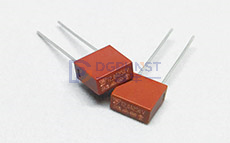Analysis of the Relationship between Safety Certification and Quality of Fuses: Quantity ≠ Quality
1、 The core role of safety certification
Safety certification (such as UL, IEC, CCC, VDE, etc.) is the fundamental threshold for fuse safety and compliance, mainly verifying whether the product meets the safety standards of specific countries or regions, such as:
Electrical safety: overcurrent protection capability, breaking performance (such as UL 248, IEC 60127);
Material environmental protection: compliant with hazardous substance restrictions such as RoHS and REACH;
Application scenario adaptation: Automotive electronics must comply with AEC-Q200, and industrial equipment must comply with UL 508.
The essence of certification is risk management, rather than directly measuring the quality of products. Certification only represents that the product meets the minimum safety requirements, but cannot reflect its long-term reliability or performance advantages in practical applications.
2、 The relationship between the quantity and quality of safety regulations: the key lies in applicability
Redundant authentication may lead to cost waste
For example, if a fuse sold only in the Chinese market applies for UL (North America), VDE (Europe), and PSE (Japan) certifications at the same time, although it increases the "number of certifications", most of the certifications in practical applications do not have usage scenarios, which only increases costs.
Counterexample: Some low-priced fuses have been certified by multiple countries, but they use inferior materials and have insufficient actual breaking capacity, which poses a safety hazard.
The depth of core certification is more important than the quantity
Deep certification: Rigorous testing for key performance indicators, such as the "durability cycle test" in UL certification or the "temperature shock test" in automotive grade, can better reflect product quality.
Case: A certain fuse only has UL and AEC-Q200 certifications, but due to passing 2000 cycles of aging testing, its reliability is much higher than products with 5 basic certifications but no in-depth verification.
Special scenarios require matching with specialized certification
Fuses for new energy vehicles must meet ISO 8820-8 (Road Vehicle Circuit Protector Standard);
Photovoltaic inverter fuses must comply with UL 248-19 (requirements for photovoltaic specific fuses).
The value of targeted certification far exceeds that of generic certification.
3、 Core indicators for evaluating the quality of fuses (exceeding safety regulations)
Materials and processes
Melt material: Silver alloy melt has a faster breaking speed and stronger surge resistance than ordinary copper melt;
Packaging process: Ceramic tube fuses have better high temperature resistance (up to 150 ℃) than plastic shell products.
Performance parameters
Breaking Capacity: High quality fuses can reach over 10kA, while inferior products may have less than 1kA
Time current characteristics: whether they accurately match the circuit protection requirements (such as fast break and slow break types);
Aging stability: It is preferable for the resistance change rate to be ≤ 3% after 1000 hours of load testing.
Brand and Supply Chain Reliability
International brands such as Littelfuse and Bussmann have been proven for decades to have better material consistency than small factories;
The defect rate of factory products with IATF 16949 (Automotive Quality Management System) can be as low as 10ppm.
4、 Selection suggestion: Balance safety regulations with real needs
Clearly define the application scenario
Consumer electronics: CCC+UL certification is sufficient, with a focus on cost and volume;
Industrial equipment: requires IEC+UL certification and high breaking capacity (≥ 5kA);
Automotive electronics: must pass AEC-Q200 and support a wide temperature range of -40 ℃~125 ℃.
Beware of authentication traps
Verify the authenticity of certification: check the certificate number (such as E123456) through the UL official website;
Reject "pseudo standards": for example, claiming to "comply with IEC standards" but not specifying specific test items.
Performance validation priority
Request the supplier to provide an I ² t curve chart and a temperature rise test report;
Small batch testing: Verify the breaking speed and consistency at the maximum current (such as twice the rated current).

Safety certification is the "safety pass line" for fuses, not the "quality ceiling".
High quality products=necessary safety certification+high-quality materials and processes+precise performance parameters;
Blindly pursuing the number of certifications may lead to a 20% to 50% increase in costs, but cannot improve actual performance.
When selecting, the minimum necessary certification should be selected based on the application scenario, and the reliability of the product should be verified through actual testing data, in order to truly achieve a balance between safety and cost-effectiveness.
